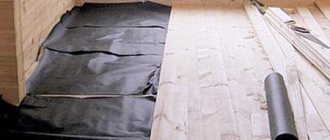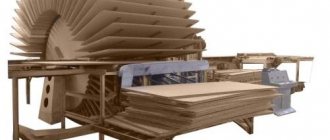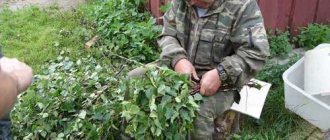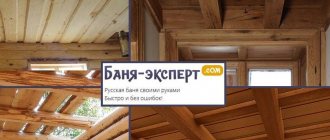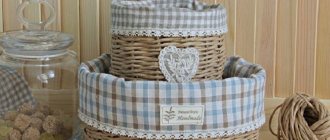Foam facade decor has an attractive price. In addition, such products have an original appearance.
Decorative elements, despite their low cost, are not inferior in their reliability, durability, and service life to decor made from other building materials.
Distinctive features of foam decoration
Foam decorations for facades are produced by pouring into special molds.
Attention! When installing foam plastic products on the facade of a house, it is necessary to use a special protective coating.
It is necessary to increase the resistance of foam plastic products to external negative influences, increase its strength, and extend its service life.
There are many reasons why ordinary buyers should purchase decorative elements made of foam plastic.
Manufacturers offer facade decorative elements in a different color range, and at very affordable prices.
Polystyrene foam does not have high reliability, mechanical resistance, or durability, but with the help of modern technologies all these minor shortcomings can be easily eliminated.
Advice! Facade decor made of expanded polystyrene (foam) without additional processing is appropriate only in places that are reliably protected from the effects of the environment.
For example, you can use façade elements made of foam plastic to decorate the cornice, which is located under the roof slope. This area is reliably protected from moisture, and the material is not at risk of mechanical damage.
The facade decor made of polystyrene foam, made in the form of arches, must be treated so that weather conditions do not spoil its appearance. Sometimes decorative elements made of polystyrene foam are used in conjunction with other materials that will allow the decoration to be used for much longer.
Among the recent fashion trends, we note the option of non-standard decoration of the external walls of a private house.
Foam plastic decor for facades is lightweight and easy to process, which is why the material is in demand among architects. It is the decor made of foam plastic that allows the owners of country cottages to turn original design ideas into reality.
Coverings of decorative elements made of polystyrene foam
The strength of the façade decor is achieved to a greater extent due to the protective coating. In our work we use several types of coatings that differ in color, price and finishing texture. Mastic quartz has a beige color and a stone-like texture. Mastic marble comes in all shades of milky and resembles plaster. The color of polymer cement is white, light gray, the finishing texture is granular.
Coatings are applied in two main ways: spraying and drawing. Broaching is more suitable for molded products; spraying is used for all types of products. It is applied in two layers with intermediate drying and has a thickness of 2 mm. In our opinion, this is the ideal thickness, since at this thickness it reliably protects facade elements from changes under the influence of weather conditions, does not crack and does not require repairs.
Original ideas for decor
Foam plastic decor for the facade is a way to give the building some romantic warmth.
Advice! If you complete the upper part of the residential building with a foam decorative entablature and add decorative columns to it, the house will become a real castle.
Such a house, decorated with figured decor made of polymer material, will become a source of pride in front of your guests. Decorative chips applied to the façade decor made of polystyrene foam can make your home more original.
Among those architectural elements that can be made from foam plastic, we highlight:
- moldings;
- carved cornices;
- console fragments;
- modillions;
- design of the basement of the house
Decorative wood imitation
Figure 5. Imitation of wood from foam plastic.
A house with such decor becomes cozier and more comfortable. The method is often used to recreate an ethnic style. A visual feature is that the stucco molding imitates the carving technique that was used in Russian huts.
Modern foam production differs from early architectural trends. However, from a visual point of view, the difference is practically not noticeable. If previously the decor was made of stone, concrete and plaster, now more modern and affordable material is available. It is filled with gas, so it weighs very little (density - from 25 to 35 kg/m2).
If desired, you can make decor from foam plastic with your own hands, but for this, at a minimum, you will need equipment for thermal cutting.
Distinctive characteristics of foam decorative elements
The decor of the facade of a polystyrene foam house has some distinctive characteristics:
- affordable price of products;
- ease and speed of installation of finished products;
- the possibility of decoration without the involvement of specialists;
- minimum weight that does not lead to additional load on the foundation of the building;
- long operational service life;
- excellent water-repellent characteristics;
- increased strength;
- environmental friendliness and resistance to decay processes
Installation work associated with the use of polymer makes it possible to carry out installation in any climatic conditions, regardless of temperature indicators.
Insulation of facades with foam plastic
It is quite possible to insulate a private low-rise house yourself, using polystyrene foam decor for the facade. The main points of the technology are outlined below:
1. Preparing the walls. They are cleaned of dirt and mortar, milled, cracks are plastered, and a primer is applied.
2. Fixing the starting profile. The dowels are placed at intervals of 30 cm, the distance between the profiles around the perimeter is 2-3 mm.
3. Preparing the foam decor for gluing. If the base of the facade is flat, special glue (for example, ceresite SM11) is applied to the entire surface of the sheets using a ridge spatula. If there are obvious deviations of the walls from the vertical, 3-6 beacons are placed on each insulation slab. After this, the adhesive composition is applied with a roller to at least 40% of the sheet area.
4. Gluing the material. Foam panels for facades are glued horizontally, from bottom to top, in a checkerboard pattern. They are pressed well against the wall, tapping them with the palm of your hand or a special grater. Excess adhesive mixture is removed, after which the cracks are sealed to avoid the formation of cold bridges: small gaps are insulated with polyurethane foam, medium ones with sealant, wide ones with pieces of polystyrene foam. To ensure that there are no joints in the corners of window and door openings, they are framed with solid sheets of insulation with holes cut in them.
5. Fixation. Drill holes, insert dowels with disc-shaped plastic caps (4 in the corners and 1 in the center), screw in the spacer cores. The corners of the facade, door and window openings are reinforced with corner elements.
6. Material reinforcement. Using a notched trowel, a plaster solution (2-3 mm) is applied to the foam plastic slabs for facades, a polymer fiberglass mesh is installed with an overlap of 10 cm, and evenly covered with a second layer of the mixture.
7. Application of decorative coating. After the obligatory primer, facade plaster is applied in two layers so that the thickness of the layer covers the caliber of the filler grain. Finally, the walls are coated with paint based on lime and cement or liquid glass.
Decor of facades made of foam plastic. Advantages, manufacturing method
You can refine a building using various architectural details: keystones, cornices, columns and pilasters, platbands, window frames, moldings. Decorative elements for facades are made from foam plastic and have many advantages over their counterparts made from other materials:
- moisture resistance - unlike gypsum and wooden structures;
- light weight and ease of installation - compared to stone products;
- wide range of colors;
- variety of forms;
- durability;
- affordable price.
First, the parts are cut out of ordinary foam plastic using the contour thermal cutting method (with a hot wire). In industrial conditions, this is done on a computer machine, having previously programmed the shape of the product.
The finish acquires additional protective properties by applying a reinforcing layer to it - in this case there is no contact with the external environment at all. After cutting out the part for façade decoration, it is covered with alkali-resistant fiberglass mesh. The next few layers are a cement-adhesive mixture of deep penetration, creating a film on the surface with a thickness of at least 1.5 mm. The parts become stronger, more resistant to ultraviolet radiation, and they no longer attract dust. In addition, the film is the basis for painting.
Special types of decor
Facade foam plastic successfully imitates various natural materials and accurately reproduces a complex molded surface.
Foam plastic under the stone
To decorate the corner areas of the building, foam facing stones are used. In appearance they cannot be distinguished from marble or granite. The relief is formed due to protrusions relative to the walls; a particularly interesting look is obtained with different textures.
Optical effects appear with different installation techniques of foam decor for the facade (in the horizontal or vertical direction, diagonal, offset). If you place the material vertically along the corners, the building takes on a solid and durable appearance. Elements laid across the column make it more elegant. Dimensions vary from 200x200 to 350x700 mm, thickness - 30-50 mm.
Installation of decor on the facade of the house
When carrying out such work, you must follow the algorithm of actions. First you need to carry out preparatory work with the surface on which the decor will be attached. To do this, remove the remains of the old plaster from the surface, remove dust and dirt. Armed with facade plaster, it is important to eliminate all internal irregularities.
Advice! If voids are identified, you can use a cement solution to level them.
Then they mark the places where the decorative façade elements will be attached. If some elements of the product protrude by 10-15 centimeters, you will have to strengthen the structure with dowels driven into the walls of the house in advance. Before starting work related to the design of the foam plastic facade, professionals recommend checking the evenness of the surface.
The next stage of installation work will be diluting the glue and applying it to the back side of the decorative fragments
When attaching them to the wall, a little force will be required to improve the quality of adhesion of the glue to the surface being designed.
Attention! Be careful when working with decorative fragments, as the product is fragile.
The installation process is completed by sealing the fastener gaps with foam or sealant. After it is completely dry, you can remove their remains with a spatula.
Next, a high-quality primer of all decorative elements is carried out using a special solution. At the final stage, the manufactured polymer decor is painted with acrylic dyes according to the design project. To increase the service life of products, professionals recommend painting 2-3 times.
Applying additional protection to façade decor is a mandatory stage of finishing work. This will protect the finished product from sudden temperature changes and high humidity.
Features of installing facade decor with your own hands
We have already touched a little on the description of the installation of facade slabs and the application of decorative plaster.
All that remains is to learn how to attach façade elements from the most popular materials. The easiest way to install foam products and parts made of polystyrene foam. Polyurethane parts of the facade are installed in the same way. This DIY facade decoration is so simple that even a person far from construction can handle it.
First of all, you need to remember that attaching foam parts is possible only in the warm season. The outside temperature should be between +15 and +25.
- Surface preparation is one of the most important steps. If the wall is not prepared appropriately, the elements will fall off over time. First you need to clean the surface of everything unnecessary - old paint, plaster, protruding parts. To do this, use sandpaper, a spatula, and in some cases a sander. Tap the wall with a rubber or wooden hammer. Where the wall is damaged, repair the surface and allow to dry. Another important point in preparation for installation is checking the surface with a level. When gluing slabs, unevenness of 10 mm per 1 square meter is allowed. When gluing small parts, it is good if the wall is perfectly flat.
- The next stage will be disassembling and fitting the parts. Lay out all the parts on the floor, check the labels on them. Remember that both the sandals and the moldings have extra length. Cut them to size using a special knife or small hacksaw.
Trying on parts
Attach multi-spikes to the wall along the entire plane of the part. They are necessary to keep the element from moving while the glue dries. Try the pieces on the wall.
Now you need to apply glue and attach the decor to the facade. Press harder, try not to let the glue protrude from the edges. Now coat the joints with acrylic sealant. After installation, it is advisable to paint everything.
Installation of decorative foam bricks on the corner of a building
Large facade structures are mounted on anchors or other fastening systems. You can learn how to install large polystyrene foam curtain rods using video instructions.
Video: Fastening large decorative elements
Decorating the appearance of a building is a creative matter, and you need to approach it with soul. At the same time, this is serious work, since the facade decor will be the first thing your family and friends see. If you want to make a uniquely beautiful home, then apply the information from this article, a little financial investment, artistic taste and time. Anyone can do this with their own hands.
Features of manufacturing foam decor
There are strict requirements for the polymer that is made for facade finishing of houses. The material for production is PSB 25f. It has all the most important characteristics and qualities in order to be used in exterior wall decoration. Thanks to modern automatic equipment, you can burn and cut contours, create products of different sizes and shapes. In order to achieve reliable protection of the created element from high humidity and sudden temperature changes, sheets of polymer material are coated with a reinforcing compound. For example, you can treat a sheet of polymer material with mineral mixtures created on the basis of acrylic paint.
Next, the sheet is sent for drying. In order for the polymer not to lose its technical and operational characteristics, it is necessary to withstand a certain temperature regime. As soon as the protective layer has dried, the workpiece is sent to the last stage of production: stripping and polishing.
The process of creating decorative elements
To cut a specific part from polystyrene foam, a special machine is used that operates according to the selected program. Everything is done precisely according to size, so there is no reason to worry that the parts will not match in thickness or other parameters.
After the element has received its shape, it must be processed in a certain way to create the required strength.
- Volumetric elements, without a large number of small patterns, are first covered with fiberglass. It performs the function of reinforcement. If there is no such coating, then the strength decreases.
- The next layer is a cement-adhesive composition with mineral and synthetic additives. The thickness of the layer will also depend on the decorative elements made of polystyrene foam (where exactly it is installed, what pattern).
- If an element has a large number of small parts or a complex geometric shape, then it is not possible to cover it with reinforcing fiber. That’s why a special protective compound is used here.
The order of finishing work
Finishing the facade with foam plastic is not a difficult task, but it requires care and experience in similar work. All instructions must be followed to ensure high quality results. Of course, when decorative finishing of a house with polystyrene foam , many points are omitted, since it has a completely different task.
Preparation and marking of the facade
This is done to make it easier to lay insulation sheets. All work should be thought out in advance and the necessary tools and materials , which will reduce the likelihood of errors.
Figure 4. Installation of insulation.
How the marking is done:
- Using a puncher, holes are made in the corners of the walls into which the dowel is inserted. Its outer part should protrude.
- A nylon thread is tied to the upper dowels at a distance of the thickness of the insulation and the layer of glue. A weight is attached to the plumb line to find the vertical, after which the thread is fixed to the lower dowel. A similar procedure is carried out for the second plumb line.
- Both threads are pulled diagonally and their plane is checked (they must touch).
- The horizontal threads are tied to the vertical threads. Its task is to be a beacon when laying insulation.
The next step is to install the bar.
Installing the starting bar
When performing work, you should start from a carefully thought-out project. To secure the profile, you need to determine the lower point of the foam, which is convenient to do using a hydraulic level. After marking, all the points are connected, and the cord is stretched - it will serve as the starting line.
To install the base profile, follow the markings. Its task is to prevent the attached slabs from moving downwards. The width of the starting strip should correspond to the width of the insulation. It is secured with dowels. The distance of fastening points is 250 mm. To compensate for temperature expansion, special connecting elements are installed between the profile elements.
Note! The base profile is not overlapped.
Preparation of the adhesive composition
To do this, the dry solution must be mixed with cold water. The easiest way to do this is with a drill with a mixer attachment. After finishing stirring, you should wait about 5 minutes, which will allow it to brew, and then mix again. In order not to prepare glue , you can use a universal composition that does not have to be diluted in water.
Installation of insulation
The technology is as follows: the material is first glued and then nailed. You should start from the bottom, using 2 spatulas : small (80 mm) and large (200 mm). Using a small tool, apply the adhesive mixture onto a wide spatula .
When gluing sheets, stick to T-joints. It is customary to apply glue not to the material, but to the wall. During the work, the adhesive mass may protrude beyond the insulation - it should be removed. To control the plane and vertical of the installation, control threads and a level are used. At the joints, the difference in insulation thickness should not exceed 3 mm.
The insulation is laid somewhat differently on the outer and inner corners of the facade. Here the material is joined using the gear method. That is, the work is carried out in such a way that a long vertical seam does not form. The glue takes 3 days to dry, after which the installed slabs are nailed to the wall with dowels.
Foam reinforcement on walls
For this purpose, special adhesive mixtures and facade mesh made of plastic are used. Using a spatula, we apply a reinforcing compound on top of the foam, and a mesh is laid on top. An additional layer of adhesive mixture is applied to it.
It is recommended to start from the corners of the building, where pieces of mesh or perforated corners are suitable for reinforcement. Here you should guess the dimensions so that the mesh is installed overlapping. The glue mixture is applied in such a way that approximately 8 - 10 cm of the mesh remains dry, since it dries quite quickly. Next, gluing the next piece, apply a solution to this area, and cover it with another mesh on top.
The reinforcing layer dries within 3 days applying the mesh After this, its remains in the form of bulges are rubbed down using sandpaper. The next stage is finishing.
Classes and grades of foam plastic
Foam classes
There are only two classes of foam: pressed and non-pressed. From the names it is clear that these materials have different production methods. The first is made using pressing equipment, the second - by sintering at high temperatures. But this production line also uses pressing equipment. However, the classification is what it is.
Expanded polystyrene suspension pressless
Which class the foam belongs to can be determined visually. Bespressovy is a complex of fairly firmly glued round and oval granules. The structure of this material is porous, the strength depends on the density.
Pressed polystyrene foam
Pressed sheet has the appearance of a fairly smooth sheet, the density of which varies and depends on the brand of the product. This material has excellent technical and performance characteristics.
Foam brands
Foam brands
Polystyrene foam produced using the non-press method is designated by the abbreviation PSB. Press - PS. The product name may also contain other letters, each of which indicates a feature of this product.
- A – the canvas has the correct geometric shape of a parallelepiped and a smooth edge;
- B – the edge of the product has an L-shaped cut;
- P – cutting of the blades is done with a hot string;
- F - façade or made using special forms;
- C – self-extinguishing;
- N – the product is suitable for external use.
The numbers in the name of the PPP indicate its density.
Brands of pressless foam
PSB-15
The most inexpensive product with a high degree of fragility. Used as a thermal insulation and packaging material, it crumbles easily and has low hygroscopicity. Traditionally used for insulating balconies and loggias, country houses, containers and outbuildings.
Foam plastic PSB S-15
PSB-25
Foam plastic of different brands
This brand of foam plastic is often supplemented with the letter “F”, so the material is recommended for insulating facades. Due to its higher density than PSB-15, it is used for the manufacture of landscape and interior decorative elements.
PSB-35
Expanded polystyrene PSB-S-35
A universal material with a wide range of applications. It is used for insulation of utilities, heat and gas mains, production equipment, thermal insulation of roofs and attics. Involved in the production of multilayer panels (including reinforced concrete) as a thermal insulation gasket.
PSB-50
Characteristics of polystyrene foam PSB-S 50
This material has the highest density among non-press foams. Demanded as a heat and sound insulator for objects of any purpose. It is able to provide high-quality protection from the cold, therefore it is used in the construction of underground communications, garages and parking lots, and in road construction.
Characteristics of brands of pressless foam.
| Index | PSB-15 | PSB-25 | PSB-35 | PSB-50 |
| Compressive strength at 10% strain (MPa) | 0,04 | 0,08 | 0,14 | 0,18 |
| Density (kg/m3) | 15,0 | 15,1-25,0 | 25,1-35,0 | 35,1-50,0 |
| Thermal conductivity (W/mK) | 0,1 | 0,43 | 0,38 | 0,38 |
| Water absorption during the day in% of the total volume | 4 | 3 | 2 | 2 |
Pressed foam brands
Durable and rigid press (tile) foam is a closed-cell plastic. It is a radiotransparent material. It has found wide application in all sectors of industry and agriculture. PVC foams, which contain polyvinyl chloride resin, are produced using the pressing method.
Brands PS-1, PS-2, PS-3, PS-4.
They have a closed-porous structure, the degree of hygroscopicity is close to 0. They are extremely resistant to atmospheric influences. Self-extinguishing, petrol and oil resistant.
High-hardness foam PS-1-350
PS-1-150
They are used in radio electronics as a material that is unstable to electrical breakdown, as well as for the manufacture of containers and floats for aggressive liquids.
For insulation of building facades, pressless foam plastics of different densities are in demand. In order to buy truly high-quality material, you need to know how you can independently check the information of the manufacturer and seller.
Polystyrene foam of increased hardness PS-4-40
Among the largest Russian producers of foam plastic are the following companies:
- "Styroplast" (Chekhov);
- "Omegaplast" (Moscow);
- "Gamma Center" (Kolomna);
- "Kavminprom" (Mineralnye Vody);
- "Stavpolyester" (Stavropol);
- "Rosplast" (Moscow).
Materials and tools for work
Certain tools will help you cope with the task.
It is best to prepare the material and tools in advance - then you will not have to be interrupted during finishing.
- For example, before visiting a store to buy materials, you should perform calculations in advance - find out the area of the walls;
- This data will help determine the required amount of material;
- Below is a list of required products. You need the foam itself (also called polystyrene foam);
- You can’t do without a primer for external use;
- The work requires special glue, you can also use polyurethane foam, it is also worth familiarizing yourself with the options for finishing frame houses - the information will not be superfluous;
- To secure the bottom row, select a special profile. Its dimensions depend on the width of the polystyrene foam purchased.
Besides:
- You need to buy reinforcing mesh. Be sure to take into account the fact that it is customary to join the canvases with an overlap (butt joints should be abandoned);
- To secure it, you need to have a hammer drill on hand;
- Grouting is done with a special trowel.
How to prepare walls
First, the walls are prepared for subsequent cladding.
The base surface of the walls must be carefully prepared - this is the main task for the first stage. The quality of this work is not only a guarantee that walls lined with foam plastic will look perfect for a long time, but also a guarantee of excellent thermal insulation.
They work like this:
- First, the walls are cleaned of old finishing materials;
- To do this, remove all layers of whitewash and paint from the surface;
- If peeling of the old coating is observed somewhere, the place needs to be cleaned; the easiest way to remove it is with a hammer and chisel;
- Any finishing elements are removed.
It is recommended to fasten expanded polystyrene so that it fits flush against the walls. That is, the surface should not have serious convexities - only 20 mm is allowed. If this indicator is not achieved, the bulges should be removed.
What's next?
- When the walls are cleaned, an antiseptic is applied to the surface - it will provide protection against fungus;;
- Even if the base looks perfect and has no visible defects, this point cannot be skipped - prevention will not be superfluous;
- Now the master needs to find the zero point. It is this line that will be the starting line - the foam will be mounted along it;
- The appearance of the structure is determined in this way. This step will also help protect the exterior of the house from condensation. Ideally, the zero mark overlaps the floor level.
An interesting point: if the dew point is not determined correctly, humidity will accumulate in the house. In the future, because of this, you may experience a characteristic mold smell - not particularly pleasant or desirable.
- The process should be taken seriously, otherwise you will end up with a real breeding ground for mold and fungi, which is definitely not what anyone wants - when finishing the facade with corrugated sheets, you also need to act responsibly;
- All the manipulations described above lead to the fact that the master receives one line - it is continuous along the entire perimeter of the building;
- Ideal result: the line runs parallel to the ground;
- A hydraulic level will help you achieve what you want. Nylon thread will help to apply the line evenly. Next comes the actual installation work, which is why everything was started.
How to install polystyrene foam
Installation of polystyrene foam is carried out according to certain rules
For experienced builders, it is obvious that installing foam plastic is the most critical part of the work. The base strip is fixed along the line outlined in advance.
An interesting point: with the help of a base strip, the foam plastic is not only secured - this element will also provide protection from rodents (they can often penetrate into the structure from the lower part of the house).
Details about the process:
- Sometimes it is not possible to purchase a plinth for one reason or another;
- This is not a cause for concern - you can always make the edging from a wooden beam, or use a metal starting profile;
- If you want to attach foam plastic to a wooden beam, before work it must be carefully secured to the facade of the building, then apply specialized antiseptics;
- Due to all this, the material will gain reliable protection from fungi and mold, the service life of the entire product will increase significantly, which is also important;
- Next, the bars are cut to the required size. Holes are made using a hammer drill, then the beam is attached to the wall with dowels - the position is aligned with a measuring cord that is pulled along the wall;
- Now the master can begin installing the first row of polystyrene foam.
Everything is simple here: special glue is applied to the material, plastic mushrooms are ideal for creating additional fastenings.
Schematically, everything looks something like this: polystyrene foam fits perfectly into the skin of the house
Further:
- Finishing the facade of the house with polystyrene foam is done from the bottom row - this is an important aspect that cannot be ignored;
- When glue is applied to the foam, it is pressed against the wall surface. Next, a hole is made with a puncher, and an additional connection is made with a plastic fungus;
- There should be 5 fixing points (definitely no less);
- The foam panels are fastened in a checkerboard pattern - this approach allows you to minimize the number of cold bridges;
- Seams are usually processed only when the glue has completely hardened. Next is sealing the seams. If they are no more than 0.5 cm, polyurethane foam is used. If the width of the seams is larger, a polystyrene foam insert is selected for filling;
- Sometimes the surface turns out to be uneven (curvature of 0.5 cm or more). In this case, the excess is removed with a special foam grater - this tool should also be on hand when working with this material;
- When foam plastic is glued in two layers, the master must carefully ensure that the second seam does not end up on the previous one. If the work is carried out this way, the seams of the first layer are not foamed - this is not necessary.



